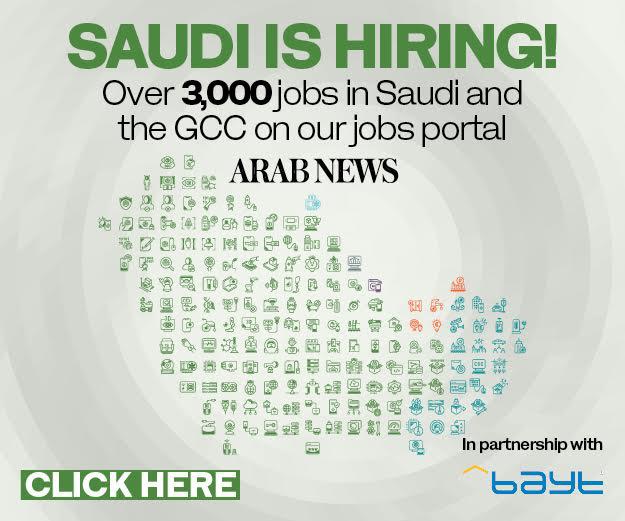Our environment is a treasure — and our legacy

https://arab.news/9prcb
As we mark Saudi Environment Week 2025 under the theme “Our environment is a treasure,” I find myself reflecting not just on the beauty of the land and seascapes we are fortunate stewards of, but on the responsibility that comes with them.
Not long ago, I stood shoulder to shoulder with my colleagues — our CEO John Pagano among them — knee-deep in the warm, shallow waters of the Red Sea coast, planting mangrove seedlings.
It was not a photo opportunity. It was a hands-on reminder that the environmental commitments we speak about in boardrooms must be lived and felt on the ground.
Watching each person, from senior leaders to team members, dig, plant, and share stories that day drove home an important truth: real change.
At Red Sea Global, this spirit informs our approach to regenerative tourism. Rather than simply minimizing harm, we seek to leave these extraordinary places better than we found them — enhancing biodiversity, restoring habitats, and building resilience.
The momentum behind nature-positive development is growing globally, and Saudi Arabia is positioning itself at the forefront.
The World Travel and Tourism Council forecasts that the Kingdom will welcome more than 150 million visitors annually by 2030, with travel and tourism contributing more than 12 percent to national gross domestic product.
In 2024, inbound tourism spending reached a record SR154 billion ($41 billion) — the highest in the Kingdom’s history — according to the Saudi Tourism Authority.
But the future of tourism cannot only be about visitor numbers. The UN has declared the 2020s the Decade on Ecosystem Restoration, calling on all sectors to prioritize nature recovery.
At the same time, landmark agreements such as the Global Biodiversity Framework at COP15, which commits nations to protecting 30 percent of land and sea territory by 2030, are redefining the minimum standard for responsible development.
Most recently, Saudi Arabia hosted the UN Convention to Combat Desertification — COP16 — in Riyadh, where world leaders came together to address land degradation and drought resilience.
The Kingdom’s leadership helped catalyze more than $12 billion in pledges through the Riyadh Global Drought Resilience Partnership, affirming that environmental stewardship is no longer a sideline issue — it is central to economic resilience, public health, and regional stability.
Against this backdrop, regenerative tourism is fast becoming the global benchmark.
Our flagship destination, The Red Sea, was master-planned with the help of the largest marine spatial planning simulation ever undertaken in the region.
The outcome? A clear decision to limit development to just 22 of the region’s more than 90 islands — leaving the vast majority of this pristine archipelago untouched.
This approach reflects our commitment to safeguarding biodiversity, preserving fragile ecosystems, and ensuring that tourism development remains sustainable and low-impact for generations to come.
We have also committed to achieving a 30 percent net conservation benefit by 2040, focusing on restoring critical habitats such as mangroves, seagrass meadows, and coral reefs.
Regeneration is not a project. It is a mindset. And it is one we are proud to champion — not because it is easy, but because it is essential.
Raed Albasseet
Our renewable energy program is already one of the largest of its kind globally for a tourism destination. More than 760,500 photovoltaic panels power our operations, supported by one of the world’s largest off-grid battery storage systems.
These are not pilot projects — they are part of the day-to-day reality across our resorts.
Our work supports the ambitions of the Saudi Green Initiative, which pledges to plant 10 billion trees and protect 30 percent of Saudi Arabia’s land and sea by 2030.
But we believe this must go beyond policy commitments and become a lived experience for visitors and communities alike. That is why we have embedded regeneration into how we design experiences.
Visitors can snorkel among healthy reefs, kayak through mangrove channels, and — like my colleagues and I did — participate directly in restoration activities, connecting personally with the landscapes they have come to admire.
Regeneration is not a project. It is a mindset. And it is one we are proud to champion — not because it is easy, but because it is essential.
With Saudi Arabia having hosted COP16, the first time this pivotal conference was held in the region, the spotlight was rightly placed on solutions that address desertification, land degradation, and drought resilience.
These are the very issues we are working to address through regenerative tourism models that prioritize water-efficient landscaping, habitat rehabilitation, and climate adaptation.
I am confident that the Kingdom’s leadership at COP16 will serve as a catalyst for greater shared learning and international collaboration, because, while environmental challenges know no borders, neither should the solutions.
When I planted those mangrove seedlings alongside my colleagues, I could not help but think about the long game. Mangroves take years to mature. Their full benefit to marine life, to coastal protection, to carbon sequestration, will be felt by those who come long after us.
That, to me, is what regeneration is truly about. It is about decisions made today that will shape the experiences and opportunities of tomorrow. It is about choosing to be good ancestors.
As the Kingdom’s tourism sector continues to grow and welcome millions more visitors each year, we have a rare opportunity to not just meet global standards but redefine them.
We can show the world that tourism can be an engine for restoration and demonstrate that the environment is a treasure to be cherished and passed on. I believe this is the legacy worth striving for.
Real change can only be achieved through genuine collaboration, grounded humility, and purposeful action.
• Raed Albasseet is group chief environment and sustainability officer at Red Sea Global.




































